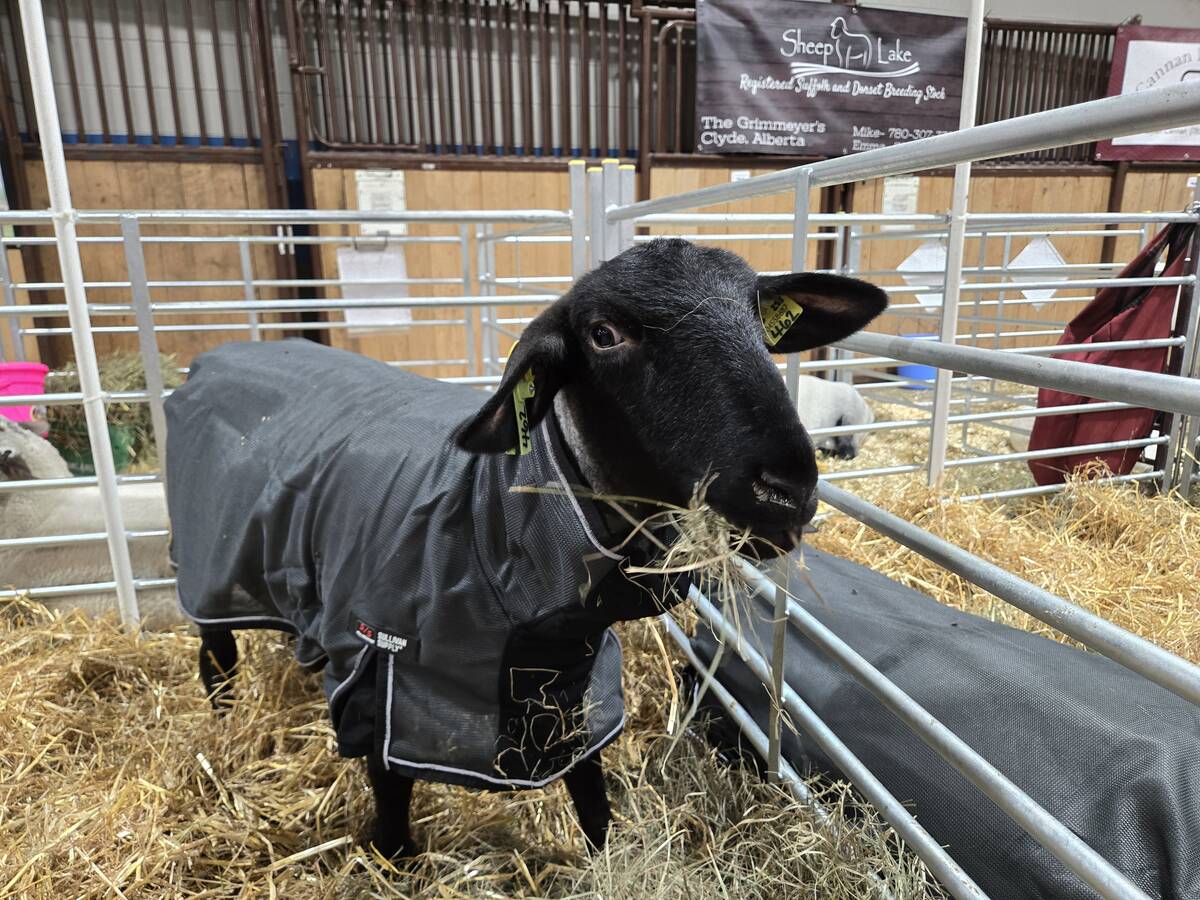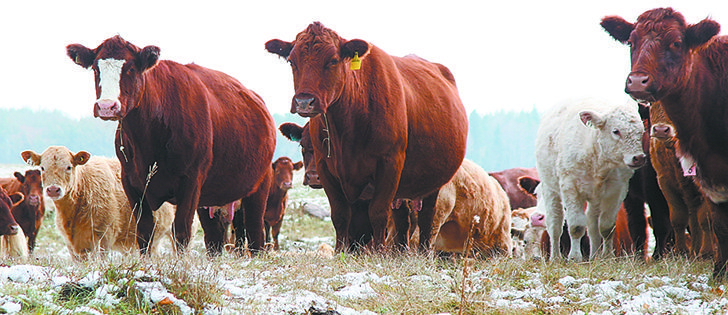Low maintenance system | Smaller calves bring less income, but are cheaper to manage
ST. AMBROISE, Man. — Standing in shin deep grass on a patch of pasture near his farm, Kent Dalrymple turned his head and gestured toward a stack of straw bales 300 metres to the south.
Dalrymple explained the bales have been sitting there for about six years because the cows on his farm rarely lie on straw, because they are kept on pasture throughout the year, even during calving season.
About 10 years ago, Dalrymple and his wife, Colleen, shifted their cattle ranch from a high management winter calving system to a low maintenance system where the cows do more of the work.
Read Also

Sheep sector navigates changes in traceability
The sheep sector is developing advanced traceability systems and addressing ongoing challenges in accessing veterinary drugs and treatments.
The Dalrymples, who run a 900 head, cow-calf and backgrounding operation south of St. Ambroise, Man., once suffered through many sleepless nights during calving time. Nowadays, they mainly focus on selecting Black Angus cattle that calve in spring with little trouble.
“We were winter calving. We were having health issues in our calves and had a hard time finding enough help. We knew there had to be a better way,” Dalrymple said during a stop on the Manitoba Pasture Tour, held Aug. 8 in the province’s eastern Interlake.
In short, Dalrymple has adopted the philosophy that the cow should do most of the work.
“If they can’t lay down, have a calf and get it sucking … there’s something wrong. They should be able to do that,” he said, adding they aggressively cull animals with defective udders. “We definitely had to make some adjustments. Any cows with bad bags, they’ve got to go because they’re just too much work…. It seems to be the daughters have the same udder down the road. If you get rid of the cow you get rid of that problem.”
As well, over the last decade Dalrymple has established a herd of bulls and cows that produce smaller calves. During the pasture tour, he told about 100 visitors to his farm that keeping birth weights between 70 and 90 pounds is essential for pasture calving
“If you keep the birth weights down and if the cows are healthy… they’ll calve backwards and everything else,” he noted. “For our heifers, I try to keep it right around 70 lb. For the cows I’m trying to keep it right around 90.”
A few tour participants suggested that small calves struggle to gain weight and aren’t as profitable as larger calves.
Dalrymple has heard the criticism before, but said the performance losses are offset by low management costs.
“That (80 to 90 lb.) is not a big calf from a 1,400 lb. cow. Some Charolais or Simmental breeders would look at that (80 lb. calf) and say oh my gosh, that’s a waste of time…. We likely give up some pounds in the fall but that’s the way it has to be.”
Pam Iwanchysko, a forage specialist with Manitoba Agriculture in Dauphin, said it’s correct that smaller calves may not generate as much income as calves with higher birth weights. Despite that fact, many Manitoba producers are adopting a low management approach to raising cattle.
“There is a huge trend towards more natural beef calving, where they are mimicking nature,” she said. “A lot of our producers are getting older and they don’t want to be calving in the middle of January…. They’re not looking for big bucks. They’re just looking for live animals.”
In the Dalrymple’s case, they manage most of the 900 cow herd by themselves. They have a hired man from April to November but the employee isn’t involved in calving. He takes care of the bulls and first-year heifers that are kept in the home yard, plants corn and helps with haying.
The Dalrymple’s have set up their operation so two people can handle the workload.
The cows are kept on pasture during the winter and are fed every four days in a bale grazing system.
When spring calving approaches, the animals are placed in groups of 80 to 100 and moved onto summer pasture.
“At the end of March those 85 cows get walked down the road and put in there, into an 80 acre piece that’s fenced off. That’s where they stay and they calve,” Dalrymple said. “It’s too big of a job for just the two of us to pair them up and move them…. There’s no mothering, no sorting or hauling.”
Once the cows are on their calving pasture the Dalrymples check on the animals once a day. Heifers are checked twice a day.
If the spring weather turns nasty the animals head into poplar bluffs for shelter. That kind of protection is essential for pasture calving but too much bush can be troublesome.
“You don’t want too much bush because then they’re very hard to find. The cows want to go off and calve on their own,” Dalrymple explained. “Our biggest job is to make sure the calves have nursed…. We do have calving problems but it’s a very small percentage.”
Speaking during the tour, Dalrymple emphasized that aggressive culling is essential to establishing a herd of cows that calve easily on their own.
That doesn’t mean that they put their feet up during calving or take a two week holiday in Hawaii. It still requires a great deal of oversight to manage a herd of 900 cows during calving time and all year round.
“We’re doing it on fairly large scale, for just myself and my wife…. You still have to look after them, you still have to check them,” said Dalrymple, who added they don’t have children and their life is anchored to the farm.
“We’re not running kids to hockey or going to school events, we’re calving cows…. It’s not for everybody… but we like what we’re doing.”
















